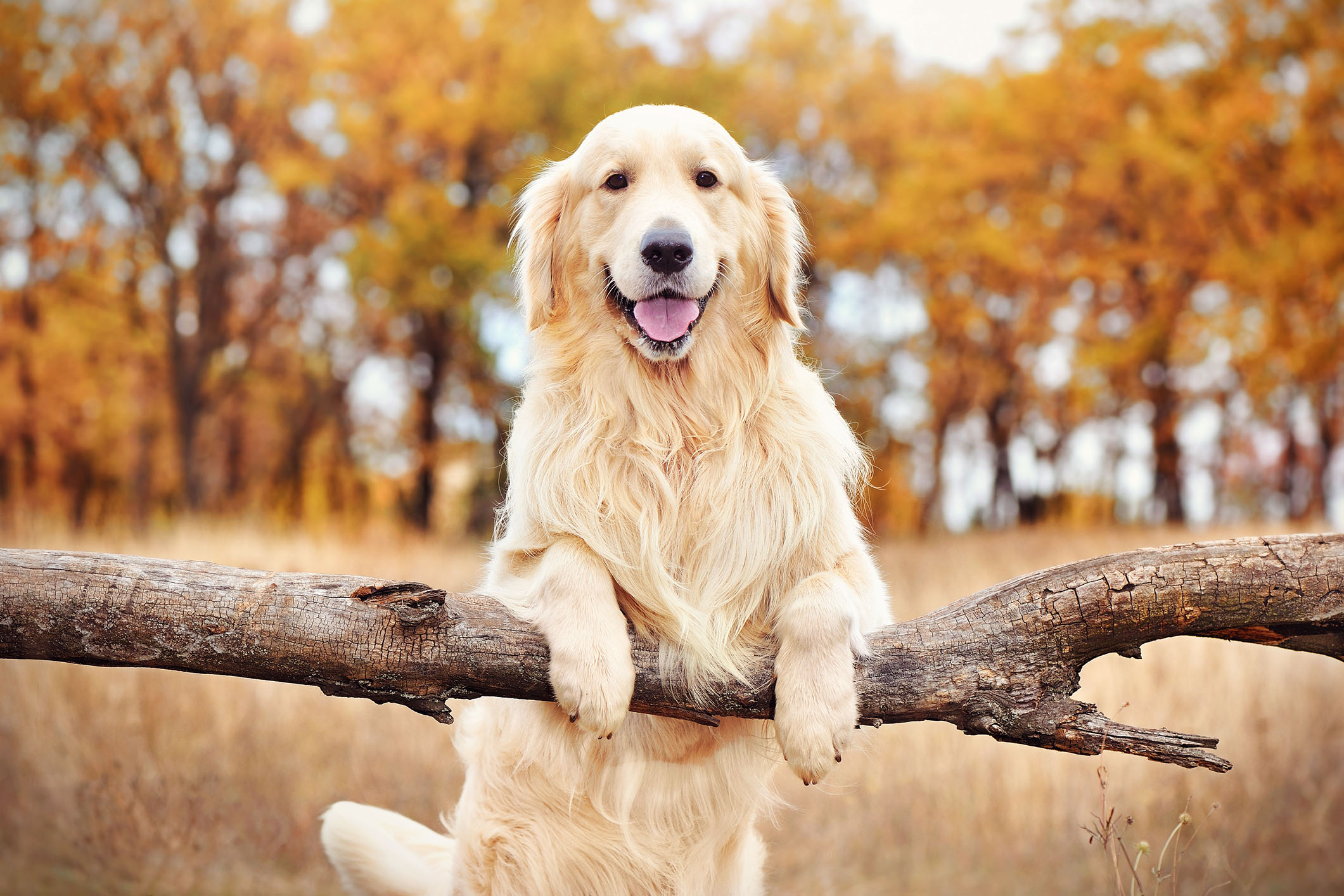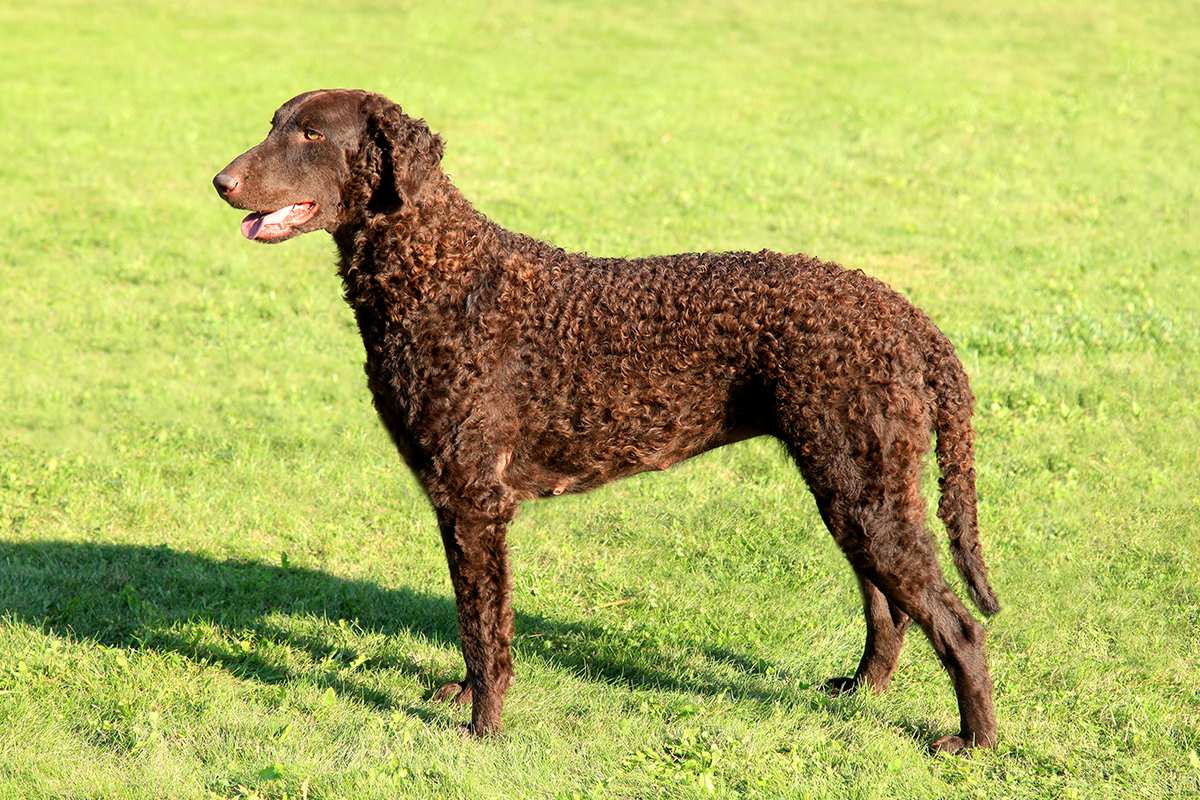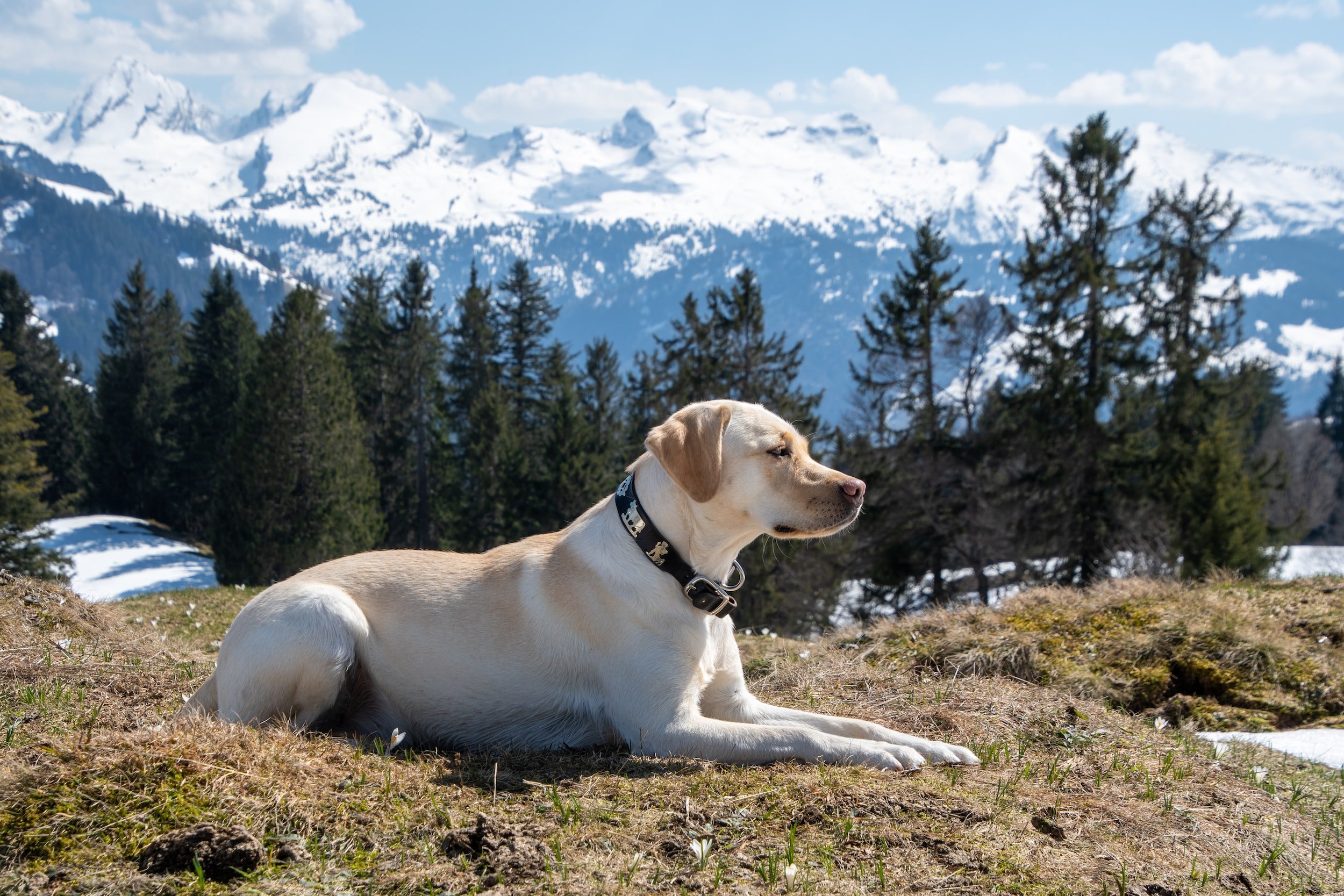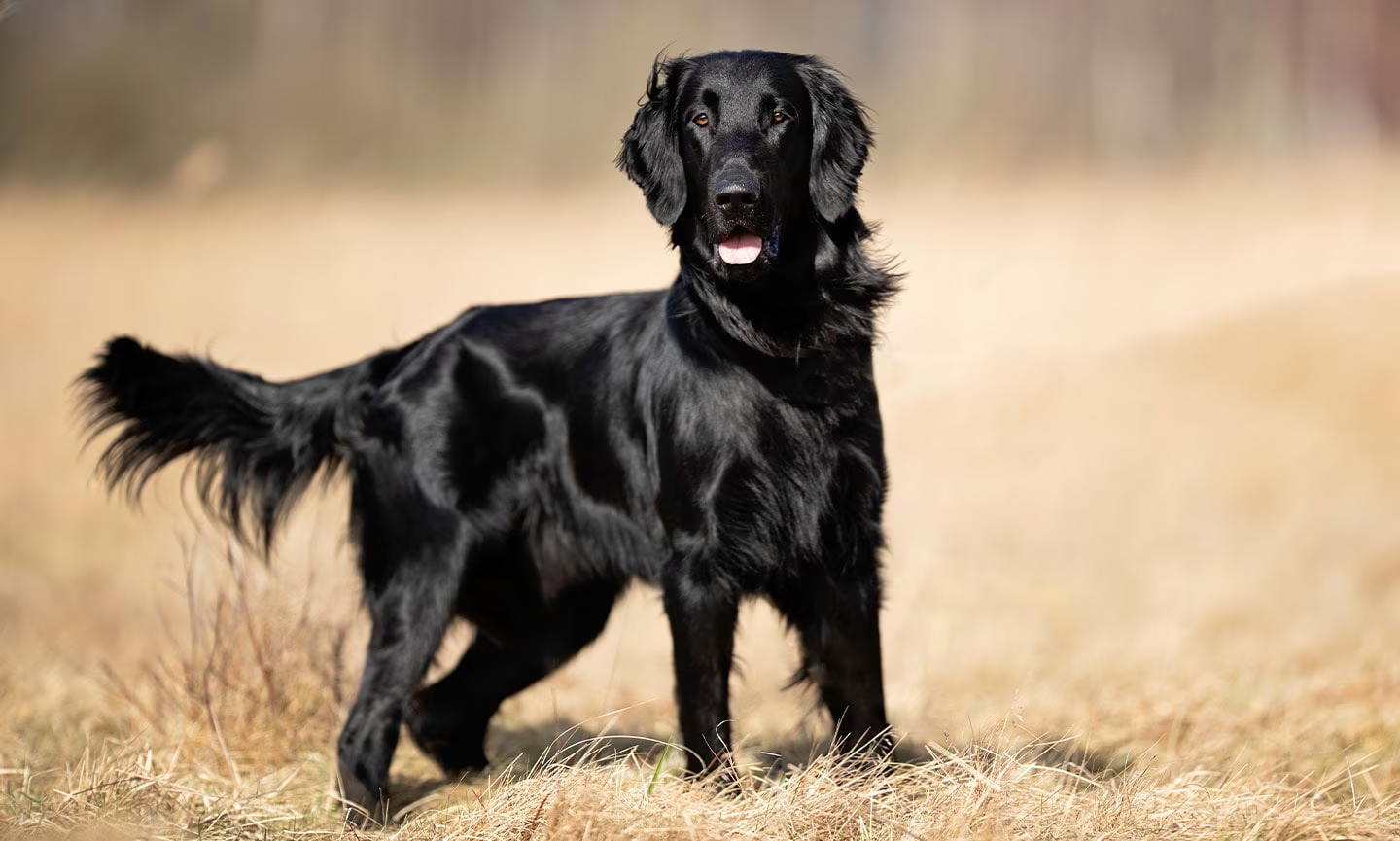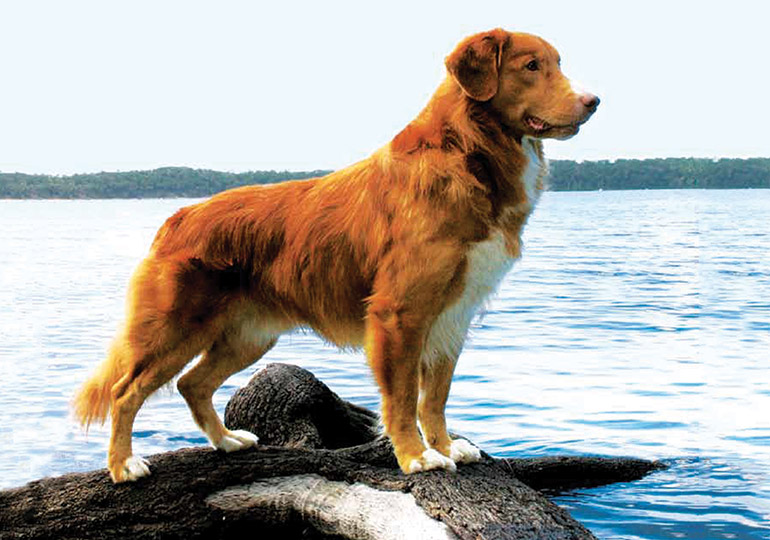Introduction: Meet the Magnificent Golden Retriever
Few dog breeds capture hearts quite like the Golden Retriever. With their flowing golden coats, perpetually smiling faces, and hearts bursting with love and devotion, these dogs have rightfully earned their place as one of America’s most beloved breeds. Whether serving as family companions, therapy dogs, search and rescue heroes, or service animals, Goldens approach life with a joyful enthusiasm and eager-to-please attitude that makes them exceptional partners in whatever role they play.
At pawtrix.wiki, we strive to provide comprehensive information on all dog breeds, and the Golden Retriever deserves special attention not just for its popularity, but for its remarkable blend of beauty, intelligence, and genuine goodness. Unlike breeds developed primarily for appearance or specific working traits, Goldens represent an extraordinary balance of form and function that creates truly well-rounded dogs.
What sets Golden Retrievers apart from many breeds is their unique combination of trainability, people-orientation, and adaptability. Developed to work closely with humans in challenging hunting conditions, they’ve evolved into dogs that genuinely thrive on human companionship and cooperation. Their desire to please, combined with natural intelligence and physical capability, makes them suitable for an impressive variety of roles – from devoted family companion to skilled working partner.
Throughout this guide, we’ll explore everything that makes Golden Retrievers special – from their fascinating development in the Scottish Highlands to their distinctive traits, care requirements, and whether they might be the perfect match for your lifestyle. By the end, you’ll understand why Golden enthusiasts are so passionate about these wonderful dogs and why the breed continues to win new devotees generation after generation.
Scottish Origins: The Gentleman’s Hunting Companion
Unlike many ancient breeds with murky origins, the Golden Retriever’s history is remarkably well-documented, tracing back to a specific time, place, and developer in the Scottish Highlands.
Development at Guisachan Estate
The Golden Retriever’s story begins in the mid-19th century Scotland with Sir Dudley Marjoribanks (later known as Lord Tweedmouth), a Scottish nobleman with a passion for developing the perfect gundog. At his Guisachan estate near Inverness, Scotland, he meticulously documented his breeding program from 1835 to 1890, records that provide us with a detailed account of the breed’s development.
Contrary to some myths that the breed descended from Russian circus dogs, the carefully preserved studbooks show that Lord Tweedmouth crossed:
- A yellow-colored retriever named Nous (purchased from an unregistered litter of otherwise black Flat-Coated Retrievers)
- A Tweed Water Spaniel (now extinct) named Belle
- Later additions of Bloodhounds, Irish Setters, and more Tweed Water Spaniels
- Eventually, sandy-colored Flat-Coated Retrievers to set type
His goal was specific: to create the ultimate gundog that excelled at retrieving waterfowl and upland game in the challenging terrain and climate of the Scottish Highlands. He sought a dog with a keen hunting ability, a soft mouth for retrieving without damaging game, intelligence and trainability, and a coat that could withstand Scottish weather – all qualities that remain hallmarks of the breed today.
Recognition and Spread
For decades, these “Retrievers – Yellow or Golden” remained primarily within the estates of Scottish nobility. The breed gained wider recognition:
- 1903: First shown at a UK dog show
- 1908: Registered as “Flat Coats – Golden or Yellow” by The Kennel Club (UK)
- 1911: Recognized as “Retrievers – Yellow or Golden” as a distinct breed
- 1920: Name officially changed to “Golden Retrievers” in the UK
- 1925: American Kennel Club recognition
- 1938: Founding of the Golden Retriever Club of America
The breed’s gentle temperament, trainability, and striking good looks helped it gain popularity beyond hunting circles. After World War II, Golden Retrievers saw an enormous surge in popularity as family companions, and their versatility soon led to their use in numerous working roles.
Evolution into Multi-Purpose Dogs
While originally developed specifically for hunting, Golden Retrievers have evolved to excel in numerous roles that capitalize on their intelligence, trainability, and people-oriented nature:
- Family companions and pets
- Service dogs for people with various disabilities
- Therapy dogs bringing comfort in hospitals, nursing homes, and disaster areas
- Search and rescue workers
- Detection dogs for various substances
- Competitive obedience, agility, and other dog sports
- And of course, hunting retrievers
This versatility stems from the breed’s fundamental characteristics – intelligence, trainability, desire to please, and love of work – all intentionally developed by Lord Tweedmouth in his breeding program. Few breeds transition so seamlessly between different roles while maintaining their essential temperament and character.
The Golden Look: Beauty with Purpose
The Golden Retriever’s appearance combines natural beauty with functional design. Every aspect of their physical structure serves a practical purpose, creating a dog that is both striking to look at and supremely capable in its original sporting role.
Size and Structure: The Balanced Retriever
Golden Retrievers are medium to large dogs with a distinctly balanced and symmetrical build:
- Males typically stand 23-24 inches at the shoulder and weigh 65-75 pounds
- Females typically stand 21.5-22.5 inches and weigh 55-65 pounds
- Body is slightly longer than tall, with a level topline
- Chest is deep but not too broad, balancing strength with agility
- Overall build combines substance with elegance
Their structure reflects their original purpose as working retrievers. They’re substantial enough to handle retrieving large game birds like geese, yet athletic enough to move efficiently through varied terrain. Their balanced proportions allow for the endurance needed for long days retrieving in the field.
One structural hallmark is the Golden’s powerful, slightly arched neck flowing smoothly into well-laid-back shoulders – a configuration that facilitates carrying retrieved game over long distances. Their straight forelegs, strong hindquarters, and medium-length tail carried nearly level with their back all contribute to their efficient movement.
The Glorious Golden Coat
The breed’s most distinctive feature is undoubtedly its beautiful coat:
- Dense, water-repellent double coat with good undercoat
- Outer coat either straight or wavy, never curly
- Feathering on neck, back of legs, underside of tail, and chest
- Color ranges from light golden to deep gold, never extremely pale or reddish
- Develops gradually, with full adult coat around 18-24 months
This luxurious coat served practical purposes in the breed’s development. The water-resistant quality allowed these dogs to retrieve repeatedly from cold Scottish waters without becoming waterlogged or chilled. The moderately long outer coat provided protection from brush and brambles, while the dense undercoat offered insulation in cold weather.
The feathering – longer hair on certain parts of the body – also serves functional purposes, including additional protection and water dispersion. Even the coat’s golden color had practical origins, making the dogs visible against both field and water while providing some camouflage when needed.
The Gentle Expression
Golden Retrievers have a characteristic head and expression that reflect their friendly nature:
- Broad skull with a slight stop
- Deep, wide muzzle nearly as long as the skull
- Dark, medium-sized eyes set well apart
- Friendly, intelligent expression that’s a hallmark of the breed
- Medium-sized ears set approximately at eye level
- Overall expression often described as kind, friendly, and trusting
The Golden’s expression is truly the window to their character – a blend of intelligence, eagerness, and fundamental kindness that accurately reflects their temperament. Their eyes should convey friendliness and never appear sharp, sullen, or wary, as this would contradict the breed’s essentially amiable nature.
Variations within the Breed
While all Golden Retrievers share fundamental traits, some variations exist:
- American Goldens: Typically lankier, with darker gold coats
- British/English Goldens: Usually stockier, with broader skulls and lighter cream/gold coats
- Field lines: Bred for hunting, typically leaner with less coat and higher energy
- Show lines: Bred for conformation, usually heavier-boned with more profuse coats
Despite these variations, all Golden Retrievers should maintain the breed’s essential qualities of balanced structure, proper coat texture, and most importantly, the kind, intelligent expression and sound temperament that define the breed regardless of specific type or lineage.
The Golden Temperament: Friendly, Intelligent, Devoted
Beyond their striking appearance, Golden Retrievers are primarily known for their exceptional temperaments. Their combination of intelligence, trainability, and genuinely friendly nature has made them ideal family companions as well as versatile working dogs.
The Friendly Ambassador
The Golden Retriever’s friendly disposition is perhaps their most defining characteristic:
- Naturally outgoing and affectionate with people of all ages
- Typically excellent with children, from toddlers to teenagers
- Generally good with other dogs and pets
- Little to no aggressive tendencies when properly bred
- Genuinely enjoys meeting new people and dogs
This friendly nature makes them poor guard dogs but excellent family companions and therapy dogs. Golden Retrievers typically greet everyone as a friend, embodying the breed standard’s description that “hostility or aggressiveness towards other dogs or people…is not in keeping with Golden Retriever character.”
Their natural affinity for people extends particularly to children, with whom well-bred Goldens are usually gentle and patient despite their size and energy. This reliable temperament is a major factor in their popularity as family dogs and therapy animals.
Intelligence and Trainability
Golden Retrievers combine intelligence with a genuine desire to work with their handlers:
- Consistently ranked among the most intelligent dog breeds
- Eager to please and responsive to positive training
- Excellent memory for learned behaviors
- Natural problem-solving abilities
- Keen awareness of handler emotions and cues
Their intelligence is paired with a distinct eagerness to please that makes them highly trainable. Unlike some intelligent breeds that may use their smarts to outthink their owners, Goldens typically channel their intelligence into understanding and fulfilling their people’s wishes.
This combination of intelligence and biddability explains their frequent use as service dogs, where they must master complex sequences of behaviors and make appropriate decisions in changing circumstances, all while maintaining a steady, reliable temperament.
Energy and Playfulness
Golden Retrievers maintain an energetic, playful spirit that requires appropriate outlets:
- Moderate to high energy levels, especially in youth
- Retain playful, puppylike qualities well into adulthood and even senior years
- Natural enthusiasm for retrieving games
- Love of water and swimming
- Need regular exercise for physical and mental well-being
Their playful nature makes them perpetual sources of entertainment for their families, but it also means they need regular activity and engagement. Without appropriate physical and mental stimulation, their considerable energy can lead to nuisance behaviors like chewing, digging, or excessive barking.
Field-line Goldens typically have higher exercise requirements than show lines, but all Golden Retrievers need regular activity to stay balanced and well-behaved. When properly exercised, most Goldens show a good “off switch” indoors, settling calmly with their families.
The Sensitive Soul
Beneath their joyful exterior, Golden Retrievers possess a sensitive nature:
- Highly attuned to owner emotions and moods
- May become stressed by household tension or conflict
- Responsive to gentle guidance, sometimes hurt by harsh correction
- Desire to be included in family activities
- Form deep, lasting bonds with their people
This sensitivity creates dogs that are remarkably in tune with their families, often seeming to understand and respond to human emotions with uncanny accuracy. Many Golden owners describe their dogs as offering comfort during difficult times without any specific training to do so.
Their desire for inclusion means they don’t thrive when isolated from their families for long periods. They want to be where their people are, participating in whatever activities are happening – a trait that makes them excellent companions but can lead to separation anxiety if not properly managed.
Living With a Golden: Practical Considerations
Beyond their appealing temperament and beautiful appearance, what’s it actually like to share your daily life with a Golden Retriever? Let’s explore the practical aspects that potential owners should consider.
Exercise Requirements: Active but Adaptable
Golden Retrievers need regular exercise to stay physically and mentally healthy:
- 30-60 minutes of active exercise daily for adult dogs
- Puppies and adolescents often need more activity and play
- Swimming is ideal exercise when available
- Retrieving games satisfy both physical and mental needs
- Mental stimulation through training and puzzle toys
While they’re certainly active dogs, well-bred Goldens are typically not hyperactive or driven to the point of being difficult to live with. They adapt reasonably well to their owner’s lifestyle, though they don’t thrive with minimal exercise or in completely sedentary households.
Activities that engage their natural abilities – particularly retrieving, swimming, and nose work – provide the most satisfaction. Interactive toys, training sessions, and puzzle feeders help provide mental stimulation, which is crucial for preventing boredom and associated behavior problems.
Grooming Needs: The Reality of the Golden Coat
That beautiful golden coat comes with maintenance requirements:
- Regular brushing (2-3 times weekly) to prevent mats and manage shedding
- More frequent brushing during seasonal shedding periods
- Particular attention to feathering on legs, tail, and behind ears
- Occasional bathing when dirty or smelly
- Regular checks and cleaning of ears, which can trap moisture
Golden Retrievers shed moderately year-round with heavier seasonal shedding, typically in spring and fall. During these “blowing coat” periods, daily brushing helps manage the significant amount of loose hair. Even with regular grooming, Golden owners should accept that some dog hair on clothes and furniture is inevitable.
Their feathering can collect burrs, seeds, and debris during outdoor activities, so checking and brushing after outdoor adventures helps prevent matting. Their ear shape can trap moisture, making regular ear inspection and cleaning important for preventing infections, especially for dogs who swim frequently.
Training Approach: Positive and Engaging
Successfully training a Golden Retriever involves working with their intelligence and eagerness to please:
- Start early with socialization and basic manners
- Use positive reinforcement techniques – they thrive on praise and rewards
- Keep training sessions upbeat and engaging
- Incorporate play and retrieving into training when possible
- Avoid harsh corrections that can damage their confidence and enthusiasm
Their intelligence and desire to please make Goldens generally easy to train. They usually learn quickly and respond enthusiastically to praise, treats, and play rewards. Harsh methods are unnecessary and counterproductive – Goldens typically want to comply when they understand what’s expected.
Early training is particularly important because their size and enthusiasm can become challenging if they don’t learn appropriate manners. Teaching polite greetings, walking nicely on leash, and coming when called should be priorities with Golden puppies.
Health Considerations: Understanding Breed Tendencies
Golden Retrievers are generally robust dogs with a lifespan of 10-12 years, but they do have some breed-specific health considerations:
- Hip and elbow dysplasia
- Various eye conditions including cataracts and progressive retinal atrophy
- Heart issues, particularly subvalvular aortic stenosis
- Cancer at higher rates than many breeds
- Skin conditions and allergies in some lines
Working with a reputable breeder who conducts appropriate health testing is the best way to reduce these risks. Responsible breeders screen for hip and elbow dysplasia, eye conditions, and cardiac issues before breeding.
Maintaining appropriate weight is particularly important for Golden Retrievers, as excess weight significantly increases the risk of joint problems and can exacerbate other health issues. Regular exercise, proper nutrition, and careful monitoring of food intake help keep Goldens at a healthy weight despite their often hearty appetites.
Space Requirements and Home Environment
Golden Retrievers can adapt to various living situations with proper consideration:
- Do best in homes with some yard space
- Can adapt to suburban environments with sufficient exercise
- Need secure fencing if allowed outdoors unsupervised
- Not ideal for small apartments without nearby exercise areas
- Appreciate access to water for swimming when possible
Their moderate size makes them less cumbersome in the home than larger breeds, but they are substantial dogs that need adequate space to move comfortably. Their tails can clear coffee tables with a single enthusiastic wag, and their natural exuberance sometimes leads to knocked-over items in confined spaces.
Golden Retrievers generally don’t do well when left alone for extended periods, as they’re social dogs that prefer human company. They’re best suited to homes where someone is present much of the day or where doggy daycare or dog walkers can provide interaction during necessary absences.
Goldens and Families: A Match Made in Heaven?
Golden Retrievers have earned their reputation as excellent family dogs through their gentle temperament, patience, and genuine love of people of all ages.
With Children: Natural Nurturers
Golden Retrievers typically show exceptional compatibility with family children:
- Patient and gentle despite their size and strength
- Tolerant of the noise and activity children create
- Playful but rarely rough or overly boisterous
- Intuitive about adjusting play style to child’s age
- Often form special bonds with the children in their family
Their natural gentleness with children is one of the breed’s most valuable traits. Well-bred Goldens seem to understand the need for care around smaller humans, often showing remarkable patience with children’s sometimes clumsy interactions.
As with any dog, supervision is important, especially with very young children. Golden Retrievers’ size means they can accidentally knock over small children during play, and their puppyish enthusiasm sometimes needs to be tempered with training and management.
Multi-Pet Households
Golden Retrievers typically integrate well into homes with other pets:
- Generally get along well with other dogs
- Usually accept cats, especially when raised with them
- May have some prey drive toward very small pets
- Rarely aggressive toward household companions
- Often enjoy having animal companions when humans are away
Their friendly nature typically extends to animal housemates, making them good candidates for multi-pet households. Their hunting background may create some interest in chasing small animals like rabbits or hamsters, but many Goldens learn to accept all family pets as part of their “pack.”
Their generally easygoing temperament helps them adapt to the established social structure in homes with existing pets. They rarely challenge other animals for dominance and typically prefer harmony to conflict.
The Ideal Golden Home
Golden Retrievers tend to thrive in these types of environments:
- Active families who include them in activities
- Homes where someone is present much of the day
- Settings with appropriate space for their size
- Environments offering regular exercise opportunities
- Households that appreciate their friendly, sometimes exuberant nature
They may be less ideal for:
- Very busy households where the dog would be alone most of the time
- Extremely neat or minimalist homes (they shed and can be messy)
- Those seeking a guard dog or protective breed
- Highly sedentary lifestyles with minimal activity
- People unprepared for their shedding, grooming needs, and energy
The happiest Golden Retrievers are those who are treated as full family members and included in daily activities while having their exercise, training, and companionship needs met. Their adaptable nature means they can thrive in various family structures, from households with children to retired couples, provided they receive appropriate care and attention.
Finding Your Golden: Making the Right Match
Given the Golden Retriever’s popularity, there are many options for bringing one into your life – but not all sources create equal chances for a healthy, well-adjusted dog.
Reputable Breeders: Starting Right
Working with a responsible breeder provides the best chance for a healthy Golden with sound temperament:
- Look for breeders who perform health testing (hips, elbows, eyes, heart)
- Ask about cancer in their lines, as this is a significant concern in the breed
- Consider whether field lines, show lines, or a blend suits your lifestyle
- Expect to be thoroughly interviewed about your home and expectations
- Be prepared to wait for the right puppy – good breeders often have waiting lists
Reputable breeders invest in health testing, careful breeding decisions, and proper puppy raising practices. They typically provide ongoing support throughout the dog’s life and stand behind their puppies with guarantees.
While Golden Retrievers don’t show the extreme differences between show and field lines that some sporting breeds do, there are still variations in energy level and physical characteristics. Be honest with breeders about your lifestyle and expectations to get the best match for your home.
Rescue and Adoption: Second Chances
For those open to adult dogs, rescue can be a wonderful option:
- Dedicated Golden Retriever rescue organizations exist nationwide
- General shelters and rescues sometimes have Goldens or Golden mixes
- Adult dogs come with known personalities and often basic training
- Many wonderful Goldens need homes due to owner circumstances, not behavior problems
- Adoption fees typically include initial veterinary care and spay/neuter
Golden Retriever rescue organizations can be excellent resources, as they typically evaluate dogs carefully and work to match them with appropriate homes. Adult dogs can be particularly good choices for first-time owners, as their personalities and energy levels are already established.
Due to the breed’s popularity, Golden Retrievers and Golden mixes do appear in general shelters, though less frequently than some breeds due to high demand. While some may have behavior issues from inadequate training or socialization, many are wonderful dogs who simply lost their homes due to owner circumstances.
Avoiding Puppy Mills and Irresponsible Sources
The Golden Retriever’s popularity makes the breed a common target for puppy mills and irresponsible breeding:
- Avoid pet stores, which typically source from commercial breeding facilities
- Be wary of online ads offering immediate availability of multiple litters
- Question breeders who don’t perform health testing or allow facility visits
- Be suspicious of prices significantly lower than regional averages
- Research thoroughly before committing to a purchase
Puppies from these sources often come with health and temperament problems that can create heartbreak and significant expense. The slightly higher cost and longer wait for a puppy from a responsible source is a worthwhile investment in your future dog’s health and temperament.
Conclusion: Is a Golden Retriever Right for You?
After exploring the world of Golden Retrievers, you might be wondering if this immensely popular breed is the right match for your lifestyle and home.
Golden Retrievers offer a wonderful combination of beauty, friendly temperament, and trainability that makes them excellent companions for a wide range of households. Their genuine love of people, reliability with children, and versatile abilities create dogs that truly enhance the lives of their families. For those seeking an enthusiastic, intelligent dog that can participate in various activities while maintaining a steady, reliable disposition, Goldens can be ideal partners.
However, they’re not for everyone. Their exercise needs require commitment. Their shedding and grooming needs demand regular attention. Their size and energy, especially during their extended puppyhood, require management and training. Their social nature means they don’t thrive when left alone for long periods.
The perfect Golden Retriever owner is someone who:
- Enjoys regular outdoor activities and wants a canine companion to join them
- Values a friendly, people-oriented dog over a protective or independent one
- Can provide consistent, positive training and clear boundaries
- Doesn’t mind regular grooming and some dog hair around the home
- Wants an enthusiastic participant in family life who offers unwavering affection
If you’re considering a Golden Retriever, take time to meet various dogs of different ages and lines, speak with experienced owners, and honestly assess whether your lifestyle and expectations align with the breed’s needs. Remember that choosing a dog is a commitment for the entirety of that dog’s life—ideally 10-12 years for a healthy Golden.
For those who do choose a Golden Retriever and commit to meeting their needs, the rewards are substantial—a beautiful, versatile companion with a heart as golden as their coat, who approaches life with joy and forms deep bonds with their people. Whether serving as a beloved family pet, a dedicated working partner, or both, Golden Retrievers truly represent some of the best qualities dogs have to offer.
Here at pawtrix.wiki, we believe in matching the right dog with the right home. If the Golden Retriever’s unique combination of beauty, friendly temperament, and trainability speaks to you, and you’re prepared to meet their needs, you might have found your perfect canine companion—a loyal, loving friend whose wagging tail and warm heart can bring sunshine to your life for years to come.
